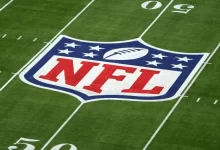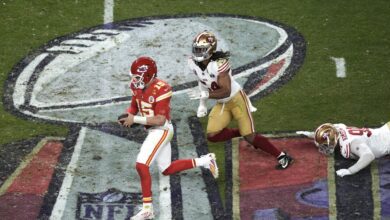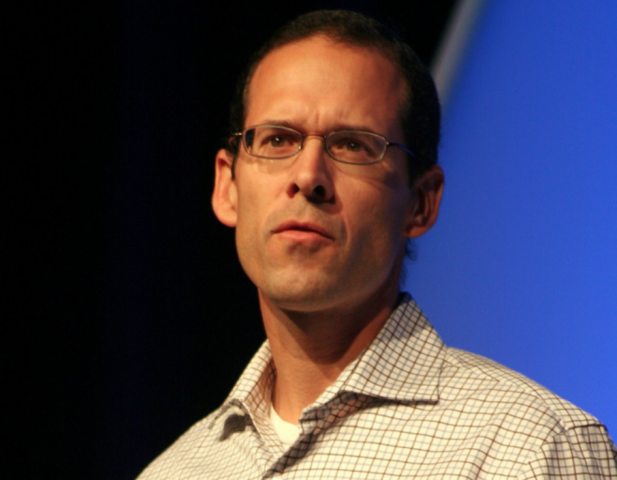
One of the more noteworthy moves this NFL offseason was not a trade, a free agent, combine performance or draft buzz. The Cleveland Browns made the most interesting move of the offseason….yes I said it the Browns and it does not pertain towards RG3. The Browns hired Paul DePodesta . Who is that you may ask? Paul DePodesta worked in baseball all his life, first as a scout for the Cleveland Indians then assistant GM of the Oakland A’s then GM of the LA Dodgers and his most recent employer the New York Mets. This is why the hire was interesting. DePodesta is a lifelong baseball man who was one of the lead executives in baseball to use analytics and sabermetrics in baseball to evaluate baseball players and now he is the Chief Strategy Officer for the Cleveland 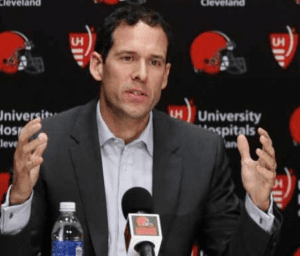 Browns. I applaud the Browns for attempting something new and being one of the first teams to attempt to bring Moneyball into the NFL.
Browns. I applaud the Browns for attempting something new and being one of the first teams to attempt to bring Moneyball into the NFL.
The term Moneyball and the concept of Moneyball is to find undervalued pieces in the market and exploit the market. Michael Lewis famously wrote about the late 1990’s, early 2000’s Oakland A’s in his book called Moneyball. Brad Pitt and Jonah Hill starred in the movie Moneyball depicting Lewis’s book. The movie was quite successful earning six Academy award nominations including best picture, best actor and best supporting actor. The book does a masterful job at explaining how the A’s got to the point of using the concept of Moneyball and the formula’s used by General Manager Billy Beane. While I do not understand all the math pertaining towards Money ball (I majored in  History) and to quote Drill Sergeant Howard whom I went to the Drill Sergeant Academy with “I don’t math good”. Moneyball and the concept is explained here. The premise is to find concepts under-utilized in the market. (Similar to how business operates. No ice cream shops around. Let me build one.) The A’s figured out that on-base percentage was undervalued throughout baseball. The A’s built a team around players who could get on base, however, the catch was to find these players that would fit into the small Oakland A’s budget. Keep in mind that back in the early 2000’s baseball did not have revenue sharing or luxury taxes and teams like the New York Yankees could outspend other teams in route to championships. More often than not the players Oakland acquired had a deficiency or two. David Justice was old, Scott Hatteberg was a catcher playing first base, Chad Bradford threw in the mid-80’s… etc. Other teams in baseball caught on to what Billy Beane was doing and started acquiring players with high on-base percentages. Teams like the Red Sox, Blue Jays, Dodgers all started to acquire players using Moneyball and Sabermetrics. The A’s adopted to change and found other ways to build a baseball team either through pitching and defense, speed and contact, or whichever concept was under marketed.
History) and to quote Drill Sergeant Howard whom I went to the Drill Sergeant Academy with “I don’t math good”. Moneyball and the concept is explained here. The premise is to find concepts under-utilized in the market. (Similar to how business operates. No ice cream shops around. Let me build one.) The A’s figured out that on-base percentage was undervalued throughout baseball. The A’s built a team around players who could get on base, however, the catch was to find these players that would fit into the small Oakland A’s budget. Keep in mind that back in the early 2000’s baseball did not have revenue sharing or luxury taxes and teams like the New York Yankees could outspend other teams in route to championships. More often than not the players Oakland acquired had a deficiency or two. David Justice was old, Scott Hatteberg was a catcher playing first base, Chad Bradford threw in the mid-80’s… etc. Other teams in baseball caught on to what Billy Beane was doing and started acquiring players with high on-base percentages. Teams like the Red Sox, Blue Jays, Dodgers all started to acquire players using Moneyball and Sabermetrics. The A’s adopted to change and found other ways to build a baseball team either through pitching and defense, speed and contact, or whichever concept was under marketed.
Money ball as spread to other sports as well. Several teams in the NBA are now using money ball to win games. The Houston Rockets and the Philadelphia 76ers are two examples of money ball teams in the NBA. Houston values 3 pointers, free throws (which makes the presence of Dwight Howard and his lack of free throw shooting puzzling) and second round picks.
Bill Connelly of SB Nation recently had a podcast which can be accessed here about the Moneyball concept in college football. Teams like Georgia Tech, Georgia Southern and the Military academies all use the option as an offense and Connelly argued that since the option was a under-utilized concept in college football teams that employ the option are Moneyball teams. Connelly stated that Stanford used power football to control the clock and offset the up-tempo spread offenses that were establishing in the Pac-10.

Money ball examples in other sports may not necessarily work in the NFL. A team cannot tank to land the number one pick in the draft because of the minimum requirements to spend money towards the salary cap, and the NFL draft is completely random. JaMarcus Russell and Ryan Leaf and two quarterbacks that went number one and number two recently and are not in the league anymore. One of the greatest safeties in NFL history, Ed Reed, went late in the first round. Teams in the NFL all generally run the same offense with the exception of Chip Kelly, so how does money ball fit into the NFL? The answer is to exploit the market and be ahead of the offensive and defensive curve. Teams and coaches had tried to do this with varying success. The Oilers and Falcons both ran the Run and Shoot, Dolphins had wildcat formation, the 49ers, and Redskins both ran the pistol option. New defensive concepts have stuck around the league longer than the offensive counterpoints: Tony Dung’s Tampa 2 defense, Dick Lebeau zone blitz scheme, and Pete Carroll’s cover 3 scheme with tall, long corners that can press. The team that has used money ball concepts the best is Bill Belichick and the New England Patriots.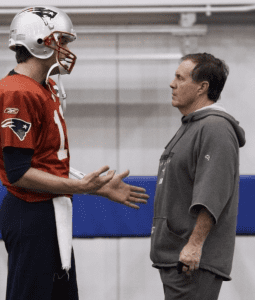
New England’s flexibility over the years is the exploitation of the market. The Pats have morphed from a defensive oriented team that had Tom Brady manage the game with Antowain Smith or Corey Dillon leading the offense; to a powerhouse passing offense led by Brady, Randy Moss, Wes Welker and Company to a double Tight End set to team with Rob Gronkowski and Aaron Hernandez. Defensively New England has shifted defensive fronts to accommodate the talent level of the front seven. Essentially New England found resources that other teams devalued, put them together and had the coaching staff figure out the best way to win. I have touched on the exploits of Bill Belichick’s during the NFL draft and how he uses picks to acquire players in earlier articles. Corey Dillon, Randy Moss, Wes Welker, Aqib Talib are examples of the money ball principles working. Albert Haynesworth, Chad Johnson (Ochocinco) have not worked, but the Pats gave up late round draft picks in order to obtain these players (in other words….nothing that came back to haunt them). Most recently the Pats traded Chandler Jones for a second round pick and Jonathan Cooper. Cooper was a first round pick several drafts ago and was expected to anchor the middle of the Cardinals offensive line for years; Cooper, however, failed to develop into that role with the Cardinals. Chandler Jones was an impending free agent and due to other defensive free agents. Players like Hightower, Collins, Vollmer are due for huge paydays next season leaving very little wiggle room to sign Jones as well. Acquiring a second round pick and an undervalued asset in Cooper is how Belichick’s keeps the Patriot’s winning. Given Belichick’s history with acquiring veteran’s using the buying low technique, he is the perfect money ball presence in the NFL.
Paul DePodesta may end up being another Cleveland Brown flameout and return to baseball, but at least the Browns are at least attempting to get ahead of the curve and bring Moneyball to the NFL. DePodesta work with baseball leads me to believe that he will be successful; it may take a few years to determine which stats to lean on to determine the talent level of players or compiling stats together to conceive a new stat (think WAR in baseball) to determine the ability or value of an NFL players. This does not happen too many times in Cleveland but the Browns did the right thing this offseason by embracing a new idea.
[wysija_form id=”1″]ATTN Dynasty Commissioners: Do you want to do something cool for your league? How about a 1-hour live show dedicated to YOUR league? Team-by-team breakdowns, rankings, and more. For details and to book a show, visit: GoingFor2.com/plp.
